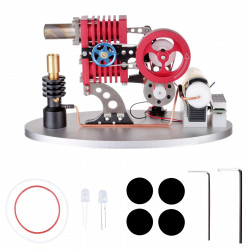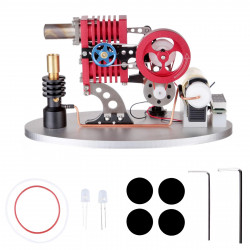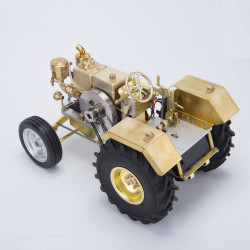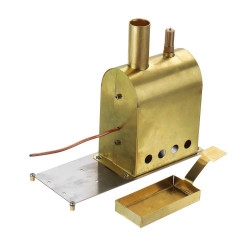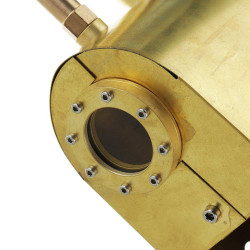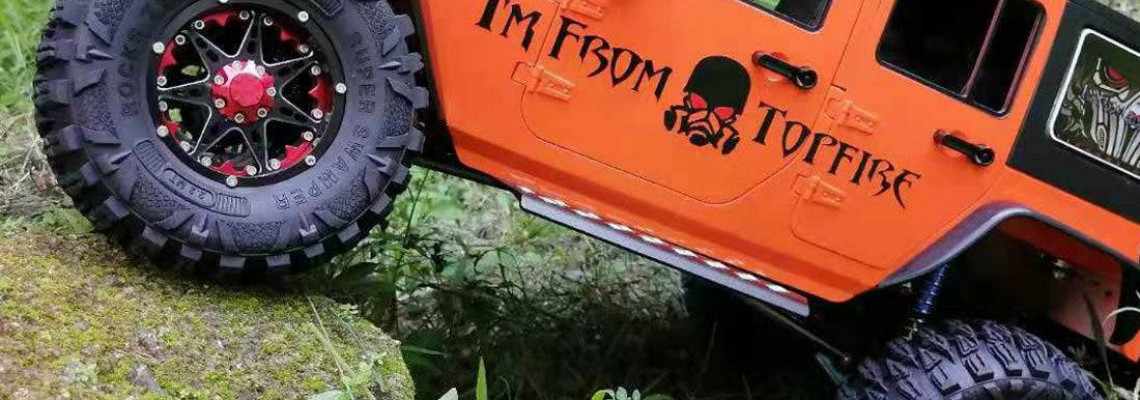
The Beginner's Guide to Kyosho Mini-Z
For almost a century, people have been improving the performance and designs of automobiles. We have also managed to reduce their size over a large portion of that time, to the point that radio controls are used to operate them. To meet the needs of the ardent enthusiasts who collect and race them, these scale-model machines have also experienced a great deal of innovation.
The Kyosho Mini-Z series is one of the most excellent RC car models available. You have most likely heard this name a lot, even if you are starting in this pastime. We can assist you in learning more, which is something you owe to yourself. This is an introduction to the Kyosho Mini-Z.
What is the Kyosho Mini-Z?
The Mini-Z is one of the newest and best-selling models from the Kyosho Corporation, one of the oldest manufacturers of model vehicles. In 1999, the Mini-Z was unveiled as the "first palm-top size RC car in the RC industry." These tiny machines have wheelbases that are between 86 and 106 mm, or roughly the length of an average hand from pinky to thumb. That takes care of the "Mini" component of its name. The "Z" refers to how simple it is to get started and how enjoyable and fulfilling it may be to reach its maximum potential via additional practice and adjustment - moving from "A" to "Z."
The Kyosho Mini-Z line has gained notoriety and admiration among RC car enthusiasts in the two decades since it was first released. All of the cars are of exceptionally high quality, both in terms of design and functionality. They allow fans to feel as though they possess a genuinely excellent vehicle without having to shell out nearly as much money for the real-size counterpart. In addition, they are enjoyable.
History of the Mini-Z
In 1999, Kyosho produced its first chassis for the Mini-Z line, which was appropriately named the MR-01. It was available in three real-world vehicle-based models: the Subaru WRX, the Mitsubishi Lancer Evo VI, and the Nissan Skyline GTR. Variants, such as monster trucks and SUV "Overland" models, were shortly unveiled by Kyosho.
In 2004, the MR-02, the next iteration of their flagship model, was released with some significant design revisions. Interestingly, the RC car's AAA batteries were now lying down rather than standing straight. As evidence of its superiority in RC racing, the Ferrari Enzo was the model's original design.
These classes were all equipped with two-wheel drive (2WD). The creation of all-wheel drive (AWD) vehicles, which facilitate drifting, was the company's next significant innovation. The titles of these cars are prefixed with MA rather than MR. The first was the MA-010, which was just the MR-01 with AWD. The MA-015, which followed, made use of some of the technological advances developed for the MR-03.
The latest iteration of the line, which began with the MR-01, was most recently released in 2009. The MR-03 chassis incorporates a number of significant improvements, such as a compact coreless servo motor, an optional gyro for steering detection and correction, and a dynamic strut front suspension. The newest model in its line, the MA-020, is going with it.
The Different Mini-Z Models
The Mini-Z range now includes a wide variety of models, each with unique design features and areas of expertise. Beginners can attempt learning quickly with the MR-03, "Kyosho's latest and greatest" version of the line, according to Mini-Z.com, a fansite for the brand. Built specifically for the RC racing arena, this 2WD vehicle outperforms all previous models in terms of speed and turning ability. Although it was created for experts, you will need to set up some features for yourself, which you can learn over time. Additionally, the Sports series, which includes the MR-03S and MR-03S2, offers even more competitive features.
Although there are many different models available, this can be one of the best options for novices. The AWD chassis distinguishes the MA series from the others. The MA-020, its sports variant, and the powerful MA-030EVO are examples of contemporary vehicles. The Buggy MP9 is a little larger RC car that can still do hairpin bends thanks to its 4WD suspension, and the Mini-Z Monster EX is their most recent version of the RC monster truck.
Racing Mini-Z Cars
Individuals want to show off their remote-controlled vehicles in competitive environments, and even Mini-Zs that weren't designed for this purpose are deserving opponents. For some people, the conventional peak speed of 12 mph is sufficient. However, if you believe the claims and boasting of enthusiasts, it can be increased to 35 mph or even higher. The speed will be increased dramatically with some deliberate and cautious adjustments.
Novices need to realize that even a remarkable top speed won't guarantee that they cross the finish line first. Because compact racetracks are required for small automobiles, the corners are much tighter. You must out-drift the competition in addition to outrunning them. To win at RC racing, you must be able to clinch corners without losing speed.
Mini-Z models take a few different approaches to this problem. An optional adjustable gyro system is one noteworthy new feature that may be found in some sports versions that are compatible with an AWD chassis. It can be adjusted to enhance the car's countersteering capabilities around turns. Discover how to take full advantage of features like these and learn some tips from helpful experts. Similar to a Mini-Z, you might get far, fast.
Collecting Mini-Z Cars
Even while Kyosho Mini-Z vehicles are competent and perform well, not all enthusiasts use them for racing. Some people collect the cars only for their aesthetic value, placing a high value on their beauty. The Kyosho Corporation is well aware of this feature of its allure and actively promotes its exhibition by providing non-functional components like wheels and chassis.
Full-sized, driveable cars aren't made just to be helpful, according to Kyosho's engineers and designers. Although everyone wants their vehicle to function, most people would rather not drive a car that they find "ugly" or "uncool." Therefore, in addition to mechanical design, radio control car aficionados would place a high value on visual design.
In order to achieve this, Kyosho has created Mini-Zs in 1:27 scale that look like real cars. These, of course, include race vehicles from Nissan, Subaru, and Toyota for the Japanese manufacturer. Along with civilian variants like the Toyota Prius and X, there are also Lamborghini and Ferrari motorsport models. Any fan of full-scale cars may appreciate the creativity behind these small-scale models because of their exquisite and accurate attention to detail.
Customizing Your Kyosho Mini-Z
Go ahead and enjoy the Mini-Z if you want it that way. However, you should be aware that there is a lot of customization possible for these RC cars. While some enthusiasts are motivated to utilize these computers fully, many like to tinker a little. This group is easy to locate, and you may learn how to improve your RC car's speed, turning, and general performance.
The appropriate components and equipment are required for everyone who wants to try customization. Over time, even people who are happy with their RC cars can need to replace some parts. We have dozens of parts at V8engineforsale that you may use to repair or improve your Kyosho Mini-Z.
We understand our clients' mindsets and make sure they get what they want because we are hobbyists ourselves. After reading this beginner's guide, browse our choices to get started right away.
